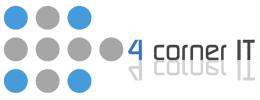Shadow IT is the collective term used to classify all information technology applications and infrastructure that is used in the workplace without authorization of the company’s IT department. This includes software, web applications/servers, hardware, and cloud technologies.
Employees often bring in applications into the company that they believe will help them achieve their tasks or complete their projects better. This is often the case as well. Shadow IT is often managed and utilized by employees to improve productivity and efficiency. This is where the gray area part comes in.
Why is Shadow IT a Gray Area
Shadow IT is considered a gray area because although the intentions and purpose of the shadow IT brought in are to increase productivity, there is also a security risk involved with this.
Allowing foreign and unauthorized shadow IT to interact and manipulate the company’s data is a big security risk. Members of the IT department are tasked with ensuring the security and compliance of the data that is transmitted through shadow IT sources. This makes their job of securing company data much harder and increase the risk of foul-play or information theft.
Some companies are willing to embrace the innovation and increased productivity brought on by these shadow IT technologies, while others frown upon it due to the increased security risks.
The Solution?
The purpose of the shadow IT introduced to the company are primarily to increase productivity and ease of task management. The increased usage of shadow IT creates what is called a digital sprawl. This term means that there is an increase in incoherent application or software that is being used in the company. For example, employee A uses Application X to make their spreadsheets while employee B uses Application Y to achieve the same task. With an increase in the number of different applications used and the number of employees, the digital sprawl can easily become difficult to manage.
This digital sprawl raises data compliance issues and can potentially cost companies a lot. This also makes it difficult to govern the use of applications as well as maintain consistency in the company at the macro-level. High amounts of digital sprawl can mean lots of wasted time, effort, and resources for a company.
Governance and Leniency
In terms of a solution, the company should task the IT department to find technologies that they are willing to authorize that will also allow employees to effectively perform their duties. Then, governance of employees to use the standard application will increase company coherence across teams and departments in the company.
If it proves too difficult a task to eliminate all shadow IT sources, then creating a technology filter is the best option. A technology filter is essentially where all employees must pass the technology they desire to use to the IT department. From there IT can either authorize the use of the technology or deny it. Making a limit to the number of unique services in the workplace is also important. This will minimize digital sprawl while also allowing the inventiveness and creativity of new technologies to enter.
By recognizing shadow IT for the potential benefit, yet inherent risk that it is, it is easier to make the best decision for the company. Finding the right tolerance for shadow IT in the company is crucial for the security of information. For more information about shadow IT or IT in general, contact us.

